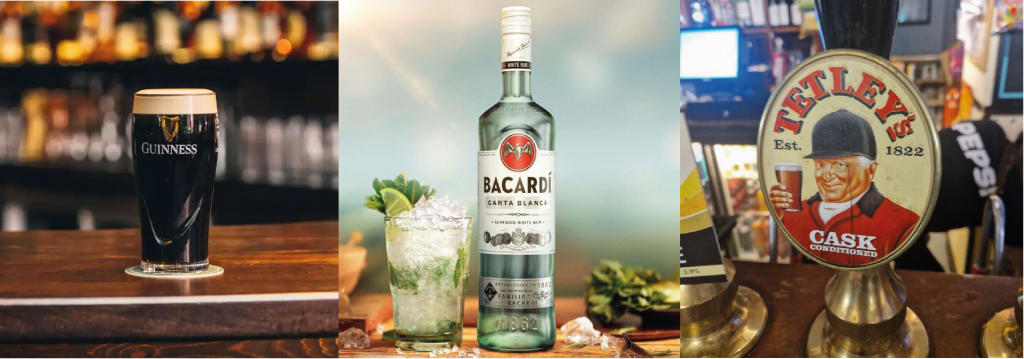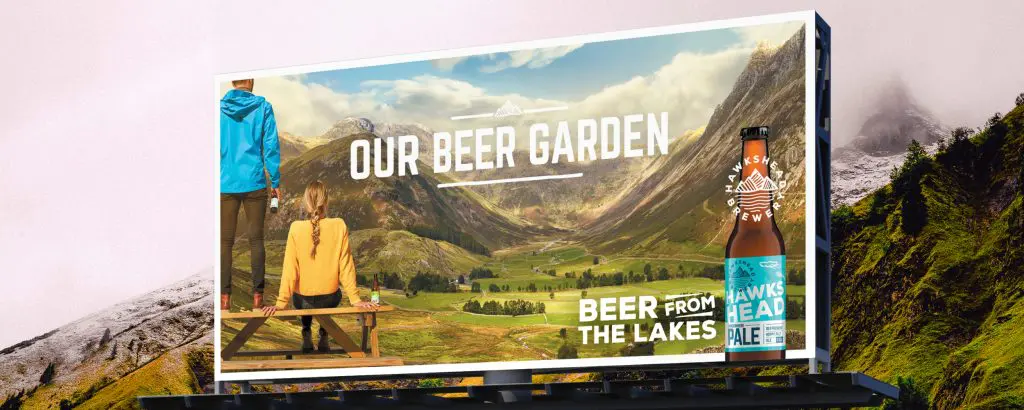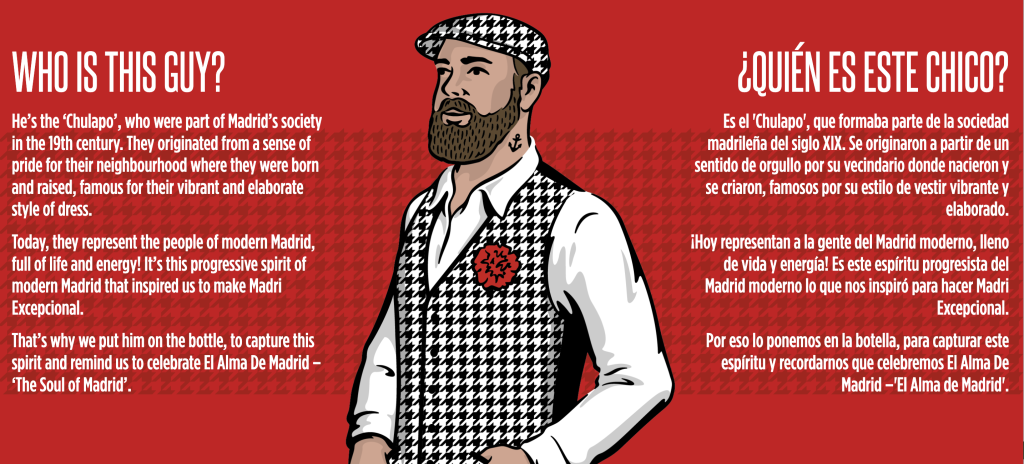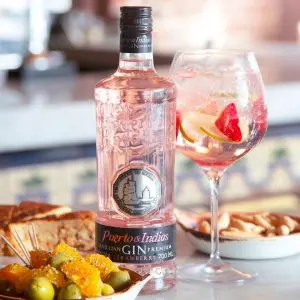How are you making a connection with your customers?

The Guinness Harp, the Bacardi Bat and my personal favourite the Tetley’s Huntsman (different times – ask your Grandad) were symbols of strong alcohol brands. They had a story to tell and a link to a heritage – because this is what alcohol brands need. Or at least this is what they needed. So, how do you build a great alcoholic brand?
I often tell the story in client meetings (and when I am boring our team at Ponderosa) that I want my beer to be 300 years old and made by monks, in Belgium. However, I want my rollercoasters to be made yesterday by NASA. Not sure if NASA have gone into the rollercoaster market but you get the point.
Great alcohol brands have that touch of anarchy or a little symbol that take you on a journey or told you a nice story. We focused on the image of the Baobab tree and the African botanicals in our work to get Whitley Neill Gin to be the premium number 1 gin in the UK. With Crabbie’s Alcoholic Ginger Beer brand we focussed on the elephant. It was our shortcut link to the origins of the special ingredients. And that connection is vitally important in the alcohol market. Or so we thought.
What’s in a trend?
The proliferation of alcohol brands over recent years has thrown much of this thinking up into the air. New brands, in many cases, put two fingers up to the old and the heritage and the craft. Even the beer brands such as Beavertown Neck Oil and Brew Dog (love them or hate them) have created brands that are nothing to do with heritage or provenance. They are all to do with a brand point of view and a distinctive and strong brand.
But sometimes you have to use what is staring you in the face. In the work we did for Hawkshead Brewery, great tasting beer and lager from the Lake District, we championed the provenance, but we would have been daft not to. A place known for its beauty, purity and its water. Working with the client we did a great job of bringing that to life with a nice tone of voice and a distinctive look.

Look really hard for that hidden nugget
Alternatively, you have to dig really deep and find something and make it relevant to your audience. When we started working with Lamb’s Navy Rum it was a once great brand that had fallen on hard times. Described to us by bartenders as a great liquid but with the image of Uncle Albert from Only Fools and Horses. The brand was seen as a crusty old sea dog sat in the corner.
By digging a little deeper we unearthed the story or Alfred Lamb, a true British character and pioneer of his day. That discovery encouraged us to search for modern true British characters – a professional surf adventurer (who knew), a tattoo artist, a celebrated climber amongst others and featured them both in our advertising and social media.
But we went further and found pubs and bars of True Character and championed them against a backdrop of closing pubs. Here were people and pubs making an effort and needing our support. The campaign took off and Lamb’s was back to the biggest dark rum in the UK.
Is heritage and provenance everything?
So, there was the argument for a strong brand with nice heritage and provenance. But is it still truly the case?
The case for the prosecution could present Madri – one of the fastest growing beer brands in the UK. “Alma de Madrid” the soul of Madrid is about as Spanish as I am. For the avoidance of doubt, I was born and live in Yorkshire, just like Madri. Even the strange chap on the front with his checked waistcoat is an interesting play on the Moretti man. So, what have Molson Coors done so wrong to make up a link to Madrid and a brand that is completely made up?

If I am honest, absolutely nothing. They have seen a trend for Spanish lager that remains unabated and given people (who are not too bothered about the truth of the story) a story nevertheless. Something that they can “buy into” and enjoy the feeling of their Spanish holiday and tap into that insight.
So does that undermine my argument for heritage and a great story? I don’t think so. The oldest and some of the greatest brands still do that. But they don’t have a right to a monopoly on the market just because they are old and were created in a Cuba and there were bats in the belfry (or the distillery).
You can create it – with care
 One of my favourite brands in this market is Puerto de Indias – a relatively new Spanish gin from Seville which has adopted the imagery of Seville (and the old nickname) as well as modelling the bottle on the Torre de Oro.
One of my favourite brands in this market is Puerto de Indias – a relatively new Spanish gin from Seville which has adopted the imagery of Seville (and the old nickname) as well as modelling the bottle on the Torre de Oro.
It has taken the provenance, used the local ingredients and borrowed the imagery of the area to create a distinctive brand that has relevance and interest and is growing rapidly.
They have created a proper, anchored brand one might argue. The bedrock of many great brands. But this is something that can be easily forgotten as they grow, either reacting to trends or maybe even resting on their laurels and forgetting what made them famous in the first place.
What remains so important is the clear, strong brand at the core. Whether genuine and old, or a bit made up and modern what is important in this very cluttered world is the following:
- A clear, distinctive core thought, consistently told, that can travel across the myriad media at our disposal
- Distinctive imagery that brings us back to the same place and brand
- A tone of voice that can flex when being serious or fun
It’s all about the taste, right?
In short, no. At the core of all this is remembering that most consumers don’t buy their alcohol brands for the taste. They come to that as justification. They are about an experience and generally a good time and therefore if a brand can enhance that experience and make a connection that is what is important. The brand is simply an insight or joke or a good story. And like all good stories or jokes it makes that connection with the drinker.
In the dynamic and fiercely competitive landscape of the UK alcohol market, where a plethora of options vie for consumer attention, the importance of a strong brand cannot be overstated. With a diverse array of products ranging from traditional ales to cutting-edge craft spirits, establishing a distinctive and resonant brand identity is essential for both market incumbents and new entrants.
Winning formula
Here’s my top tips to how to get it right – making sure make you have a robust brand that connects with your customer. This will not only result in fame – but adding pounds and pence to your balance sheet:
-
Be consistent – build consumer trust and loyalty
A strong brand engenders trust and loyalty among consumers. In a market where quality and safety are paramount, a well-established brand assures consumers of consistent quality. This trust translates into repeat purchases, with loyal customers often becoming brand advocates. For instance, longstanding brands like Guinness have cultivated a loyal customer base that spans generations, largely due to their consistent quality and reliable brand identity and product.
-
Be remarkable – differentiate in a crowded market
The UK alcohol market is saturated with products, making differentiation crucial. A compelling brand identity helps a product stand out on crowded shelves. Unique branding elements — such as distinctive logos, packaging, and marketing campaigns — create a memorable impression. Craft beer brands like BrewDog have effectively utilised bold branding and unconventional marketing to distinguish themselves from competitors. This will also help with the commercial aspect of getting listings (on- and off-trade) – the lifeblood of a successful alcoholic brand.
-
Connect with an emotional brand story
Consumers often connect with brands on an emotional level. A strong brand tells a story that resonates with its target audience, creating a deeper emotional connection. This narrative might revolve around heritage, provenance, sustainability, or innovation. For example, brands like Hendrick’s Gin have built their identity around a quirky, Victorian-era aesthetic and a unique production process, fostering a strong emotional bond with consumers who appreciate its distinctiveness and storytelling.
-
The right proposition = The right price
A strong brand can command premium pricing. Consumers are willing to pay more for products they perceive as superior or prestigious. This pricing power enhances profitability and market positioning. Premium brands like Johnnie Walker and Moët & Chandon leverage their well-established brand equity to justify higher prices, positioning themselves as symbols of luxury and refinement.
-
Stability to future-proof
A robust brand provides a foundation for innovation and adaptability. In a market where trends and consumer preferences are constantly evolving, a strong brand can seamlessly introduce new products or variations while maintaining its core identity. For instance, Diageo’s ability to innovate within its Smirnoff brand — introducing new flavours and formats — demonstrates how a solid brand foundation allows for agility in response to market trends.
-
Influence on distribution channels
Distributors and retailers are more inclined to stock and promote brands with strong market recognition and consumer demand. A powerful brand facilitates better shelf positioning, promotional opportunities, and overall support from distribution channels. This influence is critical in a market where shelf space is limited and competition for prime retail real estate is intense.
-
Resilience in market fluctuations
Economic downturns and market fluctuations are inevitable. A strong brand provides resilience against these challenges. Brands with a loyal customer base and strong market presence can weather economic storms better than lesser-known competitors. This resilience ensures long-term sustainability and stability in an unpredictable market.
-
Be engaging
So many new brands are now born on one of the core social platforms, creating a tribal following that, if smart, can be converted into sales. Just look how Swansea based Charlie Morgan and Jackson Quinn built the Au Vodka brand, employing very smart usage of the social media (as well as being kicked by Eden Hazard). When looking for listings a retailer or pub group will be swayed by seeing a strong, loyal social following.
To conclude
In summary, the competitive UK market, building a strong alcoholic brand is not merely an advantage but a necessity. It builds consumer trust, fosters loyalty, and creates emotional connections, all while enabling differentiation, pricing power, and adaptability.
As the market continues to evolve, brands that invest in cultivating a robust and resonant identity will not only survive but thrive, securing their place in the hearts and minds of consumers for years to come. Whether through innovative storytelling, consistent quality, or bold differentiation, the power of a strong brand remains a cornerstone of success in the ever-evolving landscape of the UK alcohol market.
